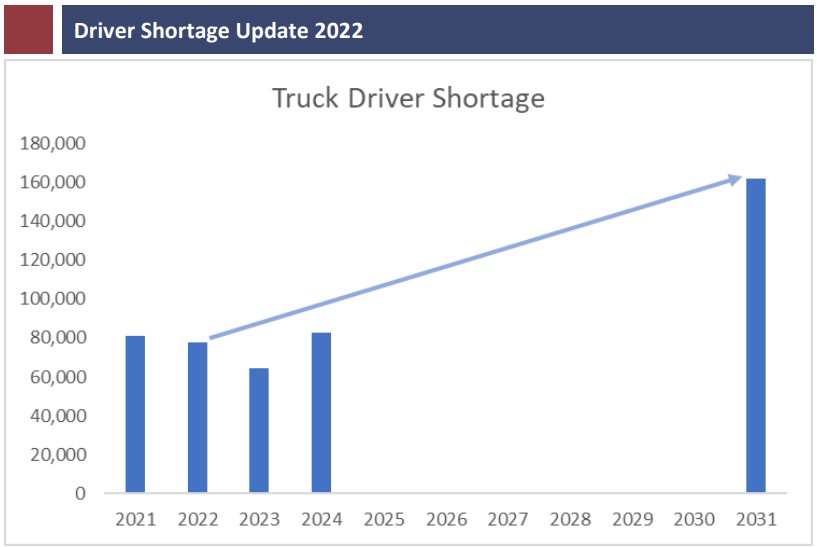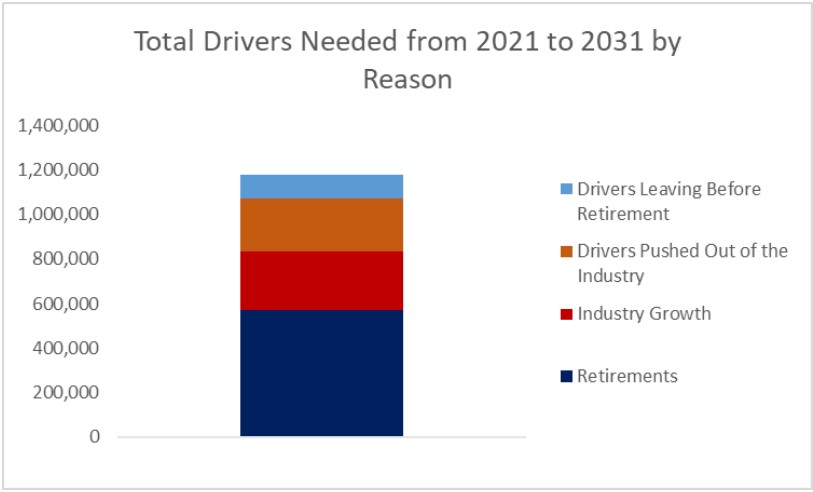The truck driver shortage in the U.S. has eased slightly but remains near its all-time high. American Trucking Associations (ATA) chief economist Bob Costello said, “Based on our estimates, the trucking industry is short roughly 78,000 drivers. That’s down slightly from 2021’s record of more than 81,000 – but still extremely high historically.”
Based on current driver demographic trends, as well as projected growth in freight demand, the shortage could swell to more than 160,000 over the next decade, the ATA update said.
“The good news is rising pay and other factors have helped the industry attract new drivers” Costello said. “However, that influx is still not enough to make a substantive difference in the shortage – particularly in the long-haul, for-hire truckload sector, the part of the industry most acutely impacted by the shortage.”

ATA calculates the shortage estimates by determining the difference between the number of drivers currently in the market and the optimal number of drivers based on freight demand.
To keep up with demand, the industry must hire nearly 1.2 million new drivers over the next decade to replace those leaving trucking either through retirement or for other reasons, the report stated.

There are many causes for the shortage, offering no single solution. The shortage is pushing up driver pay significantly. While this is good for drivers and those looking to enter this occupation, pay alone will not solve the driver shortage.
For example, the ATA said, some drivers may choose to work less when offered a pay increase and be home more often. In fact, almost 40% of truckload carriers reported to ATA that increases in pay last year resulted in drivers choosing to drive less, make the same amount of money and be home more often.